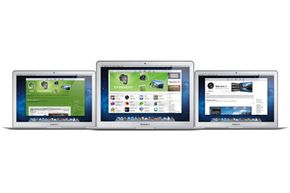Changing your IP Address on Mac OS X
An IP address is like an identity on the Internet. All computing devices connected to the Internet have an IP address. Sometimes, that address is static -- that means the address remains the same and the device will always have that address when connected to the Internet. Other addresses are dynamic, which means the device could potentially have a different IP address each time it connects to the Internet. Once connected, the IP address will remain constant but if the device disconnects and reconnects it may have another address.
Why would you change your IP address? Sometimes your computer's IP address may have a conflict, either due to another device having the same address or your address format doesn't let you access the Internet. But there are a few reasons people want to change their computers' IP addresses that are on shaky ground from an ethical standpoint. Some services will block devices that have IP addresses from certain regions. The service might be a game, music service, video service or general Web site. If the system detects that you are from a region outside of its area of service, you won't be able to access it. Changing your IP address to one that appears to be from another region can grant you access.
Advertisement
Another reason people choose to change IP addresses has to do with getting blocked or banned from a service. A relatively easy way to ban a user is to block that user's IP address. But if you change your IP address it's like you're wearing a disguise.
Perhaps you want to protect your privacy while browsing sites and services. Changing your IP address and using a Web proxy can help protect your identity, which can come in handy if you're worried that someone might be snooping on you. People who live in regions that have oppressive or restrictive governments may use Web proxies to access information and communication systems that they otherwise wouldn't be able to reach.
If all you need is a new IP address because you're having network issues, follow these steps:
- Close out of any applications that are connected to the Web.
- Click on the Apple menu and choose System Preferences.
- Go to the View menu and choose Network.
- Go to the Show menu and choose Active Network Ports.
- Click to deselect the checkbox for the port you use to connect to the Internet.
- Click Apply Now, reselect the port checkbox and click Apply Now again.
- Open a Web browser and try to connect to a Web page.
- If this doesn't work, power cycling your modem (turning it off, waiting a few seconds and turning it back on) may help.
Keep in mind that this method will only reset your Mac's IP address to a new one within the same region. This method won't let you skirt laws and policies to let you view content that is off limits to you normally. To do that, you would need to use a Web proxy service. Such services may not be entirely reliable since many governments and companies frown upon them.
To learn more about operating systems and related topics, take a look at the links below.
Related Articles
More Great Links
- PureDarwin
- Apple OS X
Sources
- Pure Darwin (Aug. 9, 2011) http://www.puredarwin.org/developers/xnu
- Singh, Armit. "What is Mac OS X?" OS X Books. December 2003. (Aug. 4, 2011) http://osxbook.com/book/bonus/ancient/whatismacosx/arch_xnu.html
- Kibsgaard, Bjornar. "History of Mac OS X." 2011. (Aug. 4, 2011) http://www.all-about-apple.com/history-of-mac-os.html
- CERN. "Tim Berners-Lee's original World Wide Web browser." 2008. (Aug. 4, 2011) http://info.cern.ch/NextBrowser.html
- Computer Hope. "Apple OS History." (Aug. 5, 2011) http://www.computerhope.com/history/macos.htm
- Apple. "Mac 101." 2011. (Aug. 4, 2011) http://www.apple.com/support/mac101/work/
- Apple. "OS X Lion." 2011. (Aug. 4, 2011) http://www.apple.com/macosx/
- Apple. "Mac OS: How to release and renew a DHCP lease." Feb. 15, 2011. (Aug. 11, 2011) http://support.apple.com/kb/TS1920
